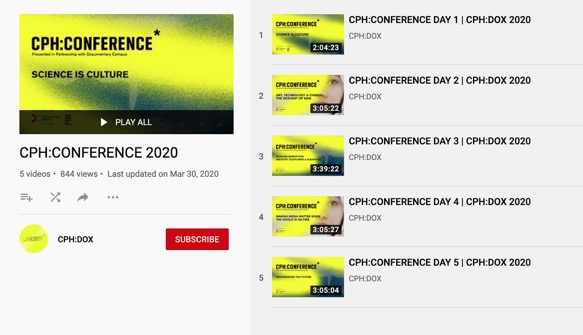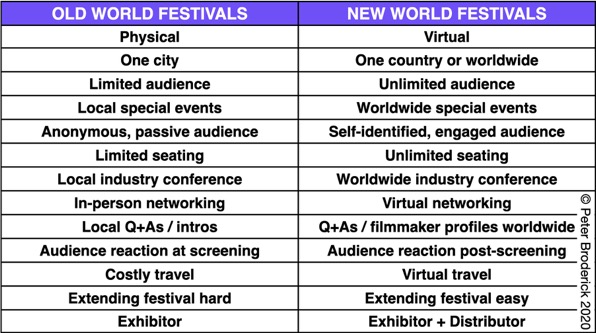May 2020
THE DISTRIBUTION BULLETIN ISSUE #40
25/May/2020
SPECIAL REPORT: WELCOME TO THE NEW WORLD OF FESTIVALS
by Peter Broderick

The Old World of Film Festivals is on hold and a New World is dawning. The pandemic has made traditional, physical festivals too dangerous. While most festivals have been postponed or canceled, some are going virtual, blazing trails others will follow.
This New World offers unprecedented opportunities and major challenges. It is beginning with purely virtual festivals, which will be followed by hybrid festivals combining virtual and physical dimensions once it is safe to gather again. While some festivals will remain in the Old World, steadfastly refusing to modify their physical model, most festivals will eventually take advantage of new virtual opportunities and emigrate to the New World as hybrid festivals.
Since the Venice Film Festival was launched in 1932, the physical film festival has changed very little. Films are screened for audiences in one city for a few days or weeks once a year. As physical film festivals have multiplied, some combination of tradition, standard industry windows of distribution, inertia, and an “if it ain’t broke, don’t fix it” attitude has maintained the basic model for almost 90 years. Suddenly this March it was no longer possible to continue physical film festivals, and festivals were confronted with daunting challenges.
CPH:DOX LEAPS INTO THE FUTURE
The first major international film festival to go fully virtual was CPH:DOX, one of the leading documentary festivals in the world. After 16 years of being a physical festival, the festival team transformed CPH:DOX to a 100% digital event in six flat-out days. What they achieved was historic and remarkable. The lessons they learned are invaluable not only for other festivals, but also for filmmakers, distributors, the press, and the rest of the independent film ecosystem.
CPH:DOX’s Festival Director, Tine Fischer, and Deputy Director and Head of Industry, Katrine Kiilgaard, led their intrepid team to organize and execute the first CPH:DOX online. During an exclusive interview a month after the festival, when the digital dust had settled, they told me the inside story.
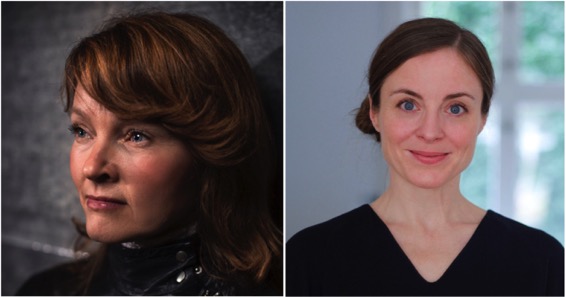
On March 11, 2020, Tine and Katrine and the rest of the CHP:DOX team finally heard Denmark’s Prime Minister announce she was shutting down the country and closing its borders. This made the physical festival that they had been planning and organizing for a year impossible. With CPH:DOX scheduled to start in six days, and posters all around Copenhagen, they faced the most important decision in the festival’s history – to create a virtual festival or cancel.
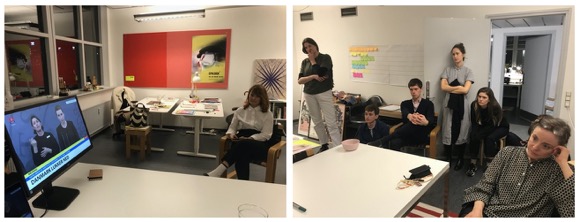
Festival staff watches Prime Minister close Denmark. Photo: Niklas Engstrøm
The team decided to go for it. There were two main reasons. They had to generate income to sustain CPH:DOX and had no idea if there would be any additional support from the Ministry of Culture to do so. If they did not have Festival revenues or substantial government aid, they were facing a financial catastrophe that could have meant the end of CPH:DOX. The second reason for going virtual was that they were strongly committed to the films they had selected for the Festival and their filmmakers. They felt a huge responsibility not to let the entire ecosystem of the documentary down during a critical period that could last six months or longer. They were also very concerned for the Festival staff, who had worked so hard for an entire year to create the 2020 Festival.
They were determined to organize something that had never been done on this scale before. Because of the pandemic, they were all working remotely from their apartments and homes, and had less than a week to invent their virtual Festival. They faced technical challenges every day in the run-up to the Festival, and then on opening night their platform crashed. Desperate to find a solution, Tine called Shift72, the digital streaming company in New Zealand. Shift72 saved the day and the Festival by uploading 150 films in 18 hours, enabling CPH:DOX to continue.

Transforming CPH:DOX into a digital event. Photo: CPH:DOX
The planned physical CPH:DOX would have included 220 films. During the crazy days preparing the virtual festival, 150 of the selected films agreed to participate, including every film in competition but one. Tine explained the main reasons the others did not participate. Various producers/rights holders could not get their heads around the concept of a virtual festival, were not sure about how giving the Festival limited streaming rights would affect their distribution, or hoped the wait for future physical festivals would not be too long. A number of these producers later told the Festival that they regretted not participating.
EDWARD SNOWDEN WORLDWIDE
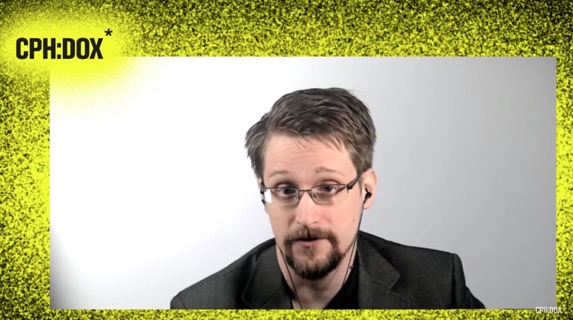
Edward Snowden speaks to a worldwide audience (watch it here)
The physical Festival also would have included 160 talks and panels with politicians, scientists, and NGOs. “We’ve managed to implement over 20 of those events, and with surprisingly great results,” explained the Festival’s head of programming, Niklas Engstrøm. The best example was Edward Snowden’s talk via Skype, previously scheduled for a 620-seat theater. Seating for the virtual event was not limited—more than 2,000 people watched Snowden’s talk live, and since then 90,000 more people have seen it. The virtual event already has a global audience almost 150 times larger than the local audience the physical event would have had.
CPH:DOX also put its Industry Conference online. Panels and talks were presented online via a combination of Webinar Jam software and Facebook. In previous years, such events had only been accessible to the few hundred people who managed to be in the Conference room in Copenhagen. This year they were available live worldwide, and will continue to be available on YouTube for years to come. This greatly increased participation. Between Facebook and YouTube, total views were 5,653 compared with 1338 views in 2019 at the live Conference. Total participants in 2020 were 3,200. At the 2019 Conference participants were able to watch events in a room that seated only 200.
In previous years, the Co-financing Forum had been a key part of the Conference. Katrine explored holding an online pitch but decided against it after talking with a number of producers. Instead, the Conference was able to organize 450 Zoom meetings over three days, and then made 450 more matches for producers to follow up individually. The meetings worked very well.
One very successful innovation was a virtual lobby where producers, distributors, and funders waited between Zoom meetings. They enjoyed connecting and networking with each other in this digital space. This may inspire new mechanisms for fostering virtual community.
GETTING THE RIGHT PEOPLE AROUND THE RIGHT PROJECTS
Katrine had a major revelation about the unique potential of the digital space to facilitate financing and attract other support for new projects. She explained that creating a new virtual model to replace or supplement location-based pitching forums provides the opportunity to “get the right people around the right projects.” Instead of just relying on the usual suspects who manage to be physically present in one room, you can proactively reach decision makers around the world unable or unwilling to travel to that room.
CPH:DOX online reached a larger and more diverse audience than physical CPH:DOX ever had in its previous 16 years. Total views for films was 117,720 (estimating 1.7 people for each online screening). Adding 96,000 views for the special events and the Industry Conference, total views were around 210,000, almost doubling 2019’s record year of 114,400.
The Festival’s reach in Denmark was wider than ever before. In previous years 90% of the CPH:DOX audience was from the Copenhagen metropolitan region. This year digital availability gave equal access to everyone in Denmark, tripling the participation of those outside the metropolitan area.
Tickets were priced at 6 Euros, half the price of tickets for physical screenings the previous year. Ticket sales were initially limited to 1,000 per film (the equivalent of seating at three physical screenings). But whenever there was greater demand, the staff asked producers if the Festival could sell additional tickets and they all agreed.
ENGAGED AUDIENCES
Audiences engaged with the Festival in new ways. As Tine explained, “they created virtual campaigns around the Festival, something we had never seen before.” People also organized watch parties, synchronizing their viewing of films and then discussing them online. Many viewers treated CPH:DOX as a social event, sharing their experiences online.
Viewers sent in photos capturing how they were participating in the Festival remotely and were thanked on Facebook --“We are beyond grateful for all of you sharing your home cinemas with us, it makes us feel like home.” In addition to heightened social media support, more viewers called and wrote the Festival than ever before. The Festival created the hashtag #stayhomestayreal, which took on a life of its own.
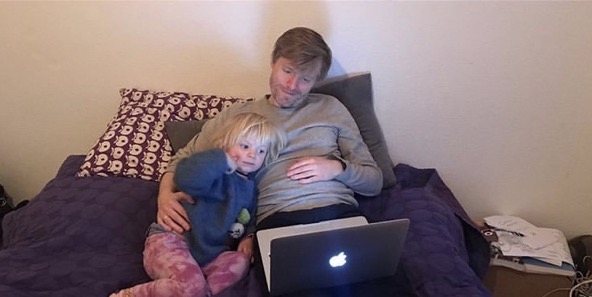
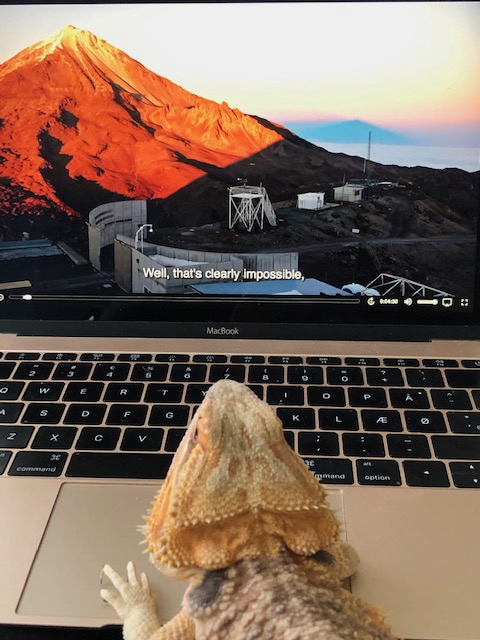
Tine and Katrine are already looking forward to the 2021 Festival. They will be able to build on everything they learned this year and will have the luxury of 12 months to dream, plan, and organize. Tine said that “there has never been so much energy inside the CPH:DOX organization.” For years the team had wanted to reinvent the Festival, and now they are doing it.
Tine noted that “with only a short time span to transform the Festival to a digital world, we had taken all the elements we usually have and put them online. Going forward, you have to think of completely different models and different formats for connecting people in the right way.”
VIRTUAL OPPORTUNITIES
Tine has noted that “CPH:DOX is transformed forever.” Tine, Katrine, and their team are beginning to explore virtual opportunities they did not have the time to realize this year. These include:
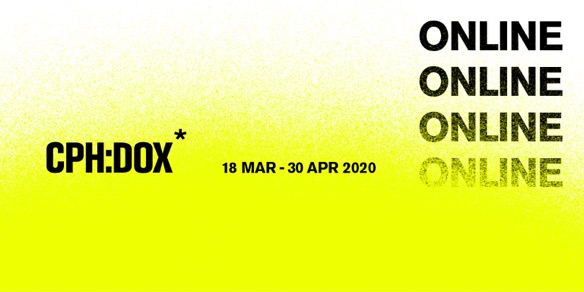
OLD WORLD vs. NEW WORLD
To fully imagine the potential of virtual festivals, it is helpful to juxtapose their essential elements with those of traditional physical festivals. Here is a chart comparing the realities of Old World Festivals with the possibilities of New World Festivals.
FILMMAKERS BUILDING GLOBAL AUDIENCES
Virtual festivals can engage audiences in new ways, enable filmmakers to build awareness of their films, and foster connections between viewers and filmmakers.
Every filmmaker can be given the option to create a personal video profile, an overview of prior films, and an introduction to their new film. Each filmmaker can also have the opportunity to participate in a substantive, moderated, and extended Q&A that will be recorded. These personal profiles, overviews of prior work, introductions, and enhanced Q&As will be available during festivals and afterwards. They will replace the traditional pro forma introductions and brief Q&As which can only be seen by viewers attending physical screenings when filmmakers can be present. In virtual festivals, viewers can be given an unprecedented opportunity to learn about filmmakers, their passion, and their previous work both before and after they see their film. They will also have the chance to participate in enhanced Q&As.
This will be an unprecedented opportunity for filmmakers to increase awareness of their work and expand their personal audience. Viewers can be given a series of opportunities to opt in to a filmmaker’s audience when they purchase a ticket, after they screen the film, if they participate in a Q&A, and when they watch the filmmaker’s profile, overview, or introduction. Although filmmakers won’t be able to be present at public screenings of their films, they will be able to get a deeper understanding of how viewers responded to their films from the comments and feedback of those who have seen it virtually and opted in, as well as from enhanced Q&As.
Going forward, filmmakers will be able to provide updates on their new work to their supporters, who will be able to support them in a variety of ways, including spreading the word about their films. The larger and more diverse a filmmaker’s personal audience, the greater the possibility she or he will have a sustainable career.
FESTIVALS AS DISTRIBUTORS
Virtual festivals will achieve things impossible for physical festivals. They will be able to:
The decades long run of the physical festival model ended in March when the coronavirus fast forwarded festivals into an uncertain future. While the Old World of Festivals is closed, the dynamic New World of Festivals is being created in real time. When the Old World does reopen, will it be able to remain unchanged any longer? Or will the traditional physical model need to add virtual dimensions to be sustainable?
If you would like to share this Special Report, here is a link:
https://bit.ly/PB_Medium1
It's my first piece on Medium, which seems like a great platform.
© 2020 Peter Broderick
by Peter Broderick

The Old World of Film Festivals is on hold and a New World is dawning. The pandemic has made traditional, physical festivals too dangerous. While most festivals have been postponed or canceled, some are going virtual, blazing trails others will follow.
This New World offers unprecedented opportunities and major challenges. It is beginning with purely virtual festivals, which will be followed by hybrid festivals combining virtual and physical dimensions once it is safe to gather again. While some festivals will remain in the Old World, steadfastly refusing to modify their physical model, most festivals will eventually take advantage of new virtual opportunities and emigrate to the New World as hybrid festivals.
Since the Venice Film Festival was launched in 1932, the physical film festival has changed very little. Films are screened for audiences in one city for a few days or weeks once a year. As physical film festivals have multiplied, some combination of tradition, standard industry windows of distribution, inertia, and an “if it ain’t broke, don’t fix it” attitude has maintained the basic model for almost 90 years. Suddenly this March it was no longer possible to continue physical film festivals, and festivals were confronted with daunting challenges.
CPH:DOX LEAPS INTO THE FUTURE
The first major international film festival to go fully virtual was CPH:DOX, one of the leading documentary festivals in the world. After 16 years of being a physical festival, the festival team transformed CPH:DOX to a 100% digital event in six flat-out days. What they achieved was historic and remarkable. The lessons they learned are invaluable not only for other festivals, but also for filmmakers, distributors, the press, and the rest of the independent film ecosystem.
CPH:DOX’s Festival Director, Tine Fischer, and Deputy Director and Head of Industry, Katrine Kiilgaard, led their intrepid team to organize and execute the first CPH:DOX online. During an exclusive interview a month after the festival, when the digital dust had settled, they told me the inside story.

On March 11, 2020, Tine and Katrine and the rest of the CHP:DOX team finally heard Denmark’s Prime Minister announce she was shutting down the country and closing its borders. This made the physical festival that they had been planning and organizing for a year impossible. With CPH:DOX scheduled to start in six days, and posters all around Copenhagen, they faced the most important decision in the festival’s history – to create a virtual festival or cancel.

Festival staff watches Prime Minister close Denmark. Photo: Niklas Engstrøm
The team decided to go for it. There were two main reasons. They had to generate income to sustain CPH:DOX and had no idea if there would be any additional support from the Ministry of Culture to do so. If they did not have Festival revenues or substantial government aid, they were facing a financial catastrophe that could have meant the end of CPH:DOX. The second reason for going virtual was that they were strongly committed to the films they had selected for the Festival and their filmmakers. They felt a huge responsibility not to let the entire ecosystem of the documentary down during a critical period that could last six months or longer. They were also very concerned for the Festival staff, who had worked so hard for an entire year to create the 2020 Festival.
They were determined to organize something that had never been done on this scale before. Because of the pandemic, they were all working remotely from their apartments and homes, and had less than a week to invent their virtual Festival. They faced technical challenges every day in the run-up to the Festival, and then on opening night their platform crashed. Desperate to find a solution, Tine called Shift72, the digital streaming company in New Zealand. Shift72 saved the day and the Festival by uploading 150 films in 18 hours, enabling CPH:DOX to continue.

Transforming CPH:DOX into a digital event. Photo: CPH:DOX
The planned physical CPH:DOX would have included 220 films. During the crazy days preparing the virtual festival, 150 of the selected films agreed to participate, including every film in competition but one. Tine explained the main reasons the others did not participate. Various producers/rights holders could not get their heads around the concept of a virtual festival, were not sure about how giving the Festival limited streaming rights would affect their distribution, or hoped the wait for future physical festivals would not be too long. A number of these producers later told the Festival that they regretted not participating.
EDWARD SNOWDEN WORLDWIDE

Edward Snowden speaks to a worldwide audience (watch it here)
The physical Festival also would have included 160 talks and panels with politicians, scientists, and NGOs. “We’ve managed to implement over 20 of those events, and with surprisingly great results,” explained the Festival’s head of programming, Niklas Engstrøm. The best example was Edward Snowden’s talk via Skype, previously scheduled for a 620-seat theater. Seating for the virtual event was not limited—more than 2,000 people watched Snowden’s talk live, and since then 90,000 more people have seen it. The virtual event already has a global audience almost 150 times larger than the local audience the physical event would have had.
CPH:DOX also put its Industry Conference online. Panels and talks were presented online via a combination of Webinar Jam software and Facebook. In previous years, such events had only been accessible to the few hundred people who managed to be in the Conference room in Copenhagen. This year they were available live worldwide, and will continue to be available on YouTube for years to come. This greatly increased participation. Between Facebook and YouTube, total views were 5,653 compared with 1338 views in 2019 at the live Conference. Total participants in 2020 were 3,200. At the 2019 Conference participants were able to watch events in a room that seated only 200.
In previous years, the Co-financing Forum had been a key part of the Conference. Katrine explored holding an online pitch but decided against it after talking with a number of producers. Instead, the Conference was able to organize 450 Zoom meetings over three days, and then made 450 more matches for producers to follow up individually. The meetings worked very well.
One very successful innovation was a virtual lobby where producers, distributors, and funders waited between Zoom meetings. They enjoyed connecting and networking with each other in this digital space. This may inspire new mechanisms for fostering virtual community.
GETTING THE RIGHT PEOPLE AROUND THE RIGHT PROJECTS
Katrine had a major revelation about the unique potential of the digital space to facilitate financing and attract other support for new projects. She explained that creating a new virtual model to replace or supplement location-based pitching forums provides the opportunity to “get the right people around the right projects.” Instead of just relying on the usual suspects who manage to be physically present in one room, you can proactively reach decision makers around the world unable or unwilling to travel to that room.
CPH:DOX online reached a larger and more diverse audience than physical CPH:DOX ever had in its previous 16 years. Total views for films was 117,720 (estimating 1.7 people for each online screening). Adding 96,000 views for the special events and the Industry Conference, total views were around 210,000, almost doubling 2019’s record year of 114,400.
The Festival’s reach in Denmark was wider than ever before. In previous years 90% of the CPH:DOX audience was from the Copenhagen metropolitan region. This year digital availability gave equal access to everyone in Denmark, tripling the participation of those outside the metropolitan area.
Tickets were priced at 6 Euros, half the price of tickets for physical screenings the previous year. Ticket sales were initially limited to 1,000 per film (the equivalent of seating at three physical screenings). But whenever there was greater demand, the staff asked producers if the Festival could sell additional tickets and they all agreed.
ENGAGED AUDIENCES
Audiences engaged with the Festival in new ways. As Tine explained, “they created virtual campaigns around the Festival, something we had never seen before.” People also organized watch parties, synchronizing their viewing of films and then discussing them online. Many viewers treated CPH:DOX as a social event, sharing their experiences online.
Viewers sent in photos capturing how they were participating in the Festival remotely and were thanked on Facebook --“We are beyond grateful for all of you sharing your home cinemas with us, it makes us feel like home.” In addition to heightened social media support, more viewers called and wrote the Festival than ever before. The Festival created the hashtag #stayhomestayreal, which took on a life of its own.


Tine and Katrine are already looking forward to the 2021 Festival. They will be able to build on everything they learned this year and will have the luxury of 12 months to dream, plan, and organize. Tine said that “there has never been so much energy inside the CPH:DOX organization.” For years the team had wanted to reinvent the Festival, and now they are doing it.
Tine noted that “with only a short time span to transform the Festival to a digital world, we had taken all the elements we usually have and put them online. Going forward, you have to think of completely different models and different formats for connecting people in the right way.”
VIRTUAL OPPORTUNITIES
Tine has noted that “CPH:DOX is transformed forever.” Tine, Katrine, and their team are beginning to explore virtual opportunities they did not have the time to realize this year. These include:
- global premieres - Tine is looking forward to making films available during the Festival to viewers around the world. While the number of tickets can be limited, the potential reach of the Festival is unlimited.
- global special events - the success of the Edward Snowden event demonstrated the potential of making events available worldwide.
- planning a longer Festival - this year they extended the Festival on-the-fly twice. Originally scheduled for March 18-29, it ended up continuing until April 30, three times longer than planned, making it possibly the world’s longest major festival. While the logistics and costs of significantly extending a physical festival are prohibitive, a longer virtual festival has great economies of scale and will generate additional revenues.

- customizing the presentation of films - instead of the Festival’s traditional one-size-fits-all approach to presenting films (e.g. every film received 3 screenings including 1 red carpet), virtual CPH:DOX will be able to customize how films are positioned and presented to a variety of audiences.
- building community virtually - Katrine is determined to create solutions to the critical challenge of enabling people to make connections, develop relationships, and create community in a digital space.
- enhancing opportunities for filmmakers - Tine noted that this year filmmakers were the one group that felt the most left out. ”They didn’t get to meet the audiences or have their films screened for the first time and that really was a loss.”
- developing additional revenue streams - creating a pricing structure for purchasing tickets to global premiers and global special events, attending the global Industry Conference, and accessing Conference resources and archives.
OLD WORLD vs. NEW WORLD
To fully imagine the potential of virtual festivals, it is helpful to juxtapose their essential elements with those of traditional physical festivals. Here is a chart comparing the realities of Old World Festivals with the possibilities of New World Festivals.
FILMMAKERS BUILDING GLOBAL AUDIENCES
Virtual festivals can engage audiences in new ways, enable filmmakers to build awareness of their films, and foster connections between viewers and filmmakers.
Every filmmaker can be given the option to create a personal video profile, an overview of prior films, and an introduction to their new film. Each filmmaker can also have the opportunity to participate in a substantive, moderated, and extended Q&A that will be recorded. These personal profiles, overviews of prior work, introductions, and enhanced Q&As will be available during festivals and afterwards. They will replace the traditional pro forma introductions and brief Q&As which can only be seen by viewers attending physical screenings when filmmakers can be present. In virtual festivals, viewers can be given an unprecedented opportunity to learn about filmmakers, their passion, and their previous work both before and after they see their film. They will also have the chance to participate in enhanced Q&As.
This will be an unprecedented opportunity for filmmakers to increase awareness of their work and expand their personal audience. Viewers can be given a series of opportunities to opt in to a filmmaker’s audience when they purchase a ticket, after they screen the film, if they participate in a Q&A, and when they watch the filmmaker’s profile, overview, or introduction. Although filmmakers won’t be able to be present at public screenings of their films, they will be able to get a deeper understanding of how viewers responded to their films from the comments and feedback of those who have seen it virtually and opted in, as well as from enhanced Q&As.
Going forward, filmmakers will be able to provide updates on their new work to their supporters, who will be able to support them in a variety of ways, including spreading the word about their films. The larger and more diverse a filmmaker’s personal audience, the greater the possibility she or he will have a sustainable career.
FESTIVALS AS DISTRIBUTORS
Virtual festivals will achieve things impossible for physical festivals. They will be able to:
- create access to previous films. Old World festival catalogs usually include short bios of filmmakers listing their earlier films. Often many of these films are not in distribution or are hard to find. New World festivals can work with filmmakers to make available their films not in distribution and to make more accessible their films that are in distribution. Imagine a viewer’s excitement who sees a film at a virtual festival, discovers a very talented director, and then has the opportunity to immediately watch some or all of her previous work.
- distribute festival films with limited or no distribution. Old World festivals are exhibitors not distributors. Many of the films shown at festivals never receive meaningful distribution. New World festivals that have a mechanism for selling tickets and streaming films could make them available post festival. Filmmakers will be able to first explore the full range of distribution options before deciding whether to give limited rights to a festival. If they have no compelling offers, they can choose to be part of a festival’s high quality catalog. They can also offer a festival older films no longer or never in distribution. Tine is very interested in exploring a new model that would enable CPH:DOX to distribute Festival films.
- hold virtual global conferences that will supplement or replace Old World pitching forums. Instead of just relying on the attendance of a subset of decision makers, these conferences will facilitate the virtual participation of a larger and more diverse range of funders, buyers, filmmakers, and industry leaders. Conferences will be accessible worldwide (live and later) to viewers around the world, regardless of their ability or willingness to travel.
The decades long run of the physical festival model ended in March when the coronavirus fast forwarded festivals into an uncertain future. While the Old World of Festivals is closed, the dynamic New World of Festivals is being created in real time. When the Old World does reopen, will it be able to remain unchanged any longer? Or will the traditional physical model need to add virtual dimensions to be sustainable?
If you would like to share this Special Report, here is a link:
https://bit.ly/PB_Medium1
It's my first piece on Medium, which seems like a great platform.
© 2020 Peter Broderick
